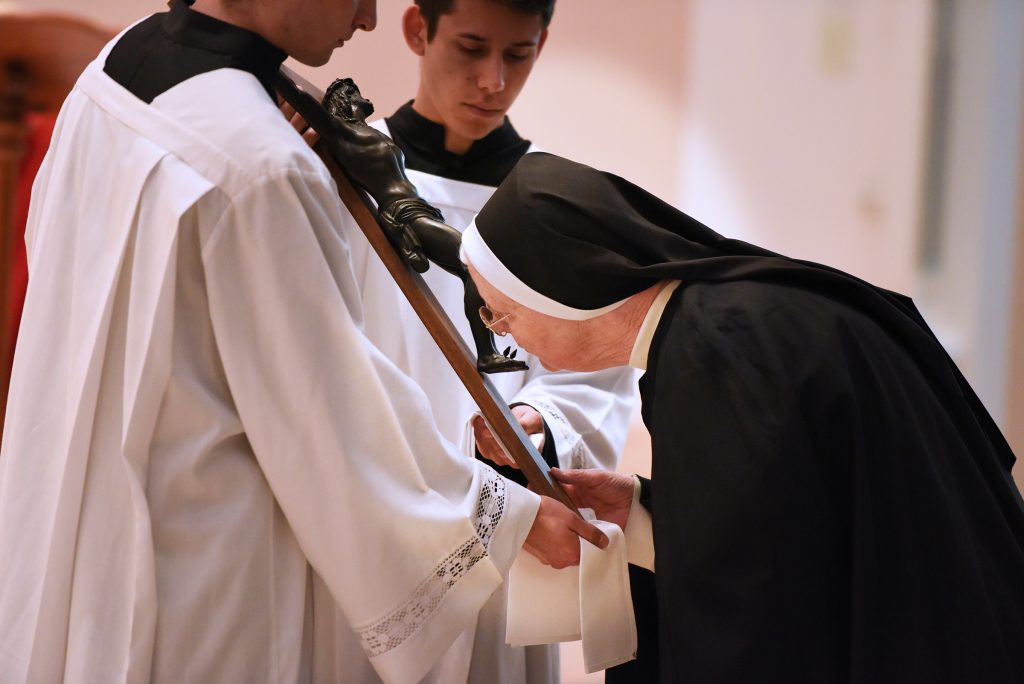Learn More
From Death to Life: Good Friday at the Motherhouse
April 17, 2025
Writing to religious in the Jubilee Year of Redemption (1984), Pope St. John Paul II described the distinct manner that consecrated men and women are more closely conformed to Christ through a “new” bond, which is a “new ‘burial in the death of Christ’: new, because it is made with awareness and choice; new, because of love and vocation; new, by reason of unceasing ‘conversion’” (Redemptionis donum, 7). This is a beautiful flowering of their baptismal consecration. In the Rite of Religious Profession, the sisters about to make vows lay prostrate in front of the altar to outwardly demonstrate an inward conformity to their crucified Spouse. At every profession, the sight of the young sisters in their black mantles prostrate in the sanctuary touches every sister’s heart, reminding her that through the evangelical counsels, we freely choose to be buried with Christ so that we may “walk like Christ in newness of life” (Romans 6:4).
Other than the day of our profession, the sisters in our community wear our black mantles for the Divine Office during the season of Lent. The mantle is the part of our Dominican habit which represents penance and mortification, so we intentionally wear it often during the Church’s liturgical season focused on prayer, fasting, and almsgiving in preparation for Easter. Our Lenten observances reach the greatest intensity on Good Friday. Silence. No bells ring, only wooden clappers are used to signal the times of prayer. And mantles are worn, not only in the chapel but also at all meals. Wrapped in black, our desire to unite ourselves with Christ in His sacrifice envelops our whole being. Not unlike the day of our profession of vows when we laid prostrate in front of the altar, on Good Friday we long to bury ourselves with Christ because we love Him and do not want Him to be alone. As Pope Francis wrote in his encyclical on the Sacred Heart, “In contemplating the heart of Christ and his self-surrender even to death, we ourselves find great consolation. The grief that we feel in our hearts gives way to complete trust and, in the end, what endures is gratitude, tenderness, peace; what endures is Christ’s love reigning in our lives,” (Dilexit nos, 161).
One of the most moving moments of the Good Friday liturgy is the Veneration of the Cross when each sister in her white habit and black mantle approaches the crucifix and kisses it with loving reverence. After the last sister in procession venerates the cross, the priest and servers bring the crucifix to the oldest sisters in their wheelchairs. They too wear their black mantles. Not able physically to process to Him, He goes to them, and they give him a kiss with a love expressive of many years of fidelity. It is a brief but profound moment that captures the essence of who we are as religious. Our religious consecration buries us not in death but ultimately in life and love because of the redemption won by Christ.

 Back
Back
